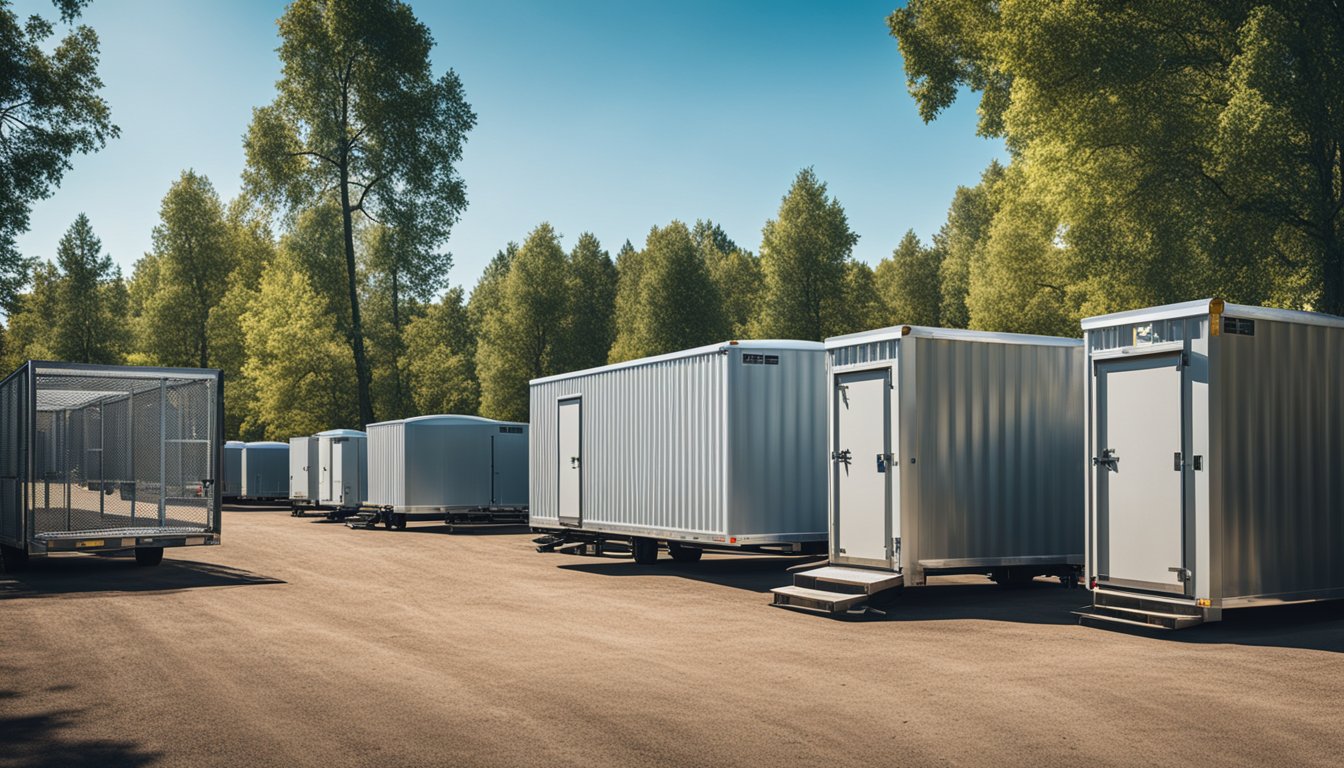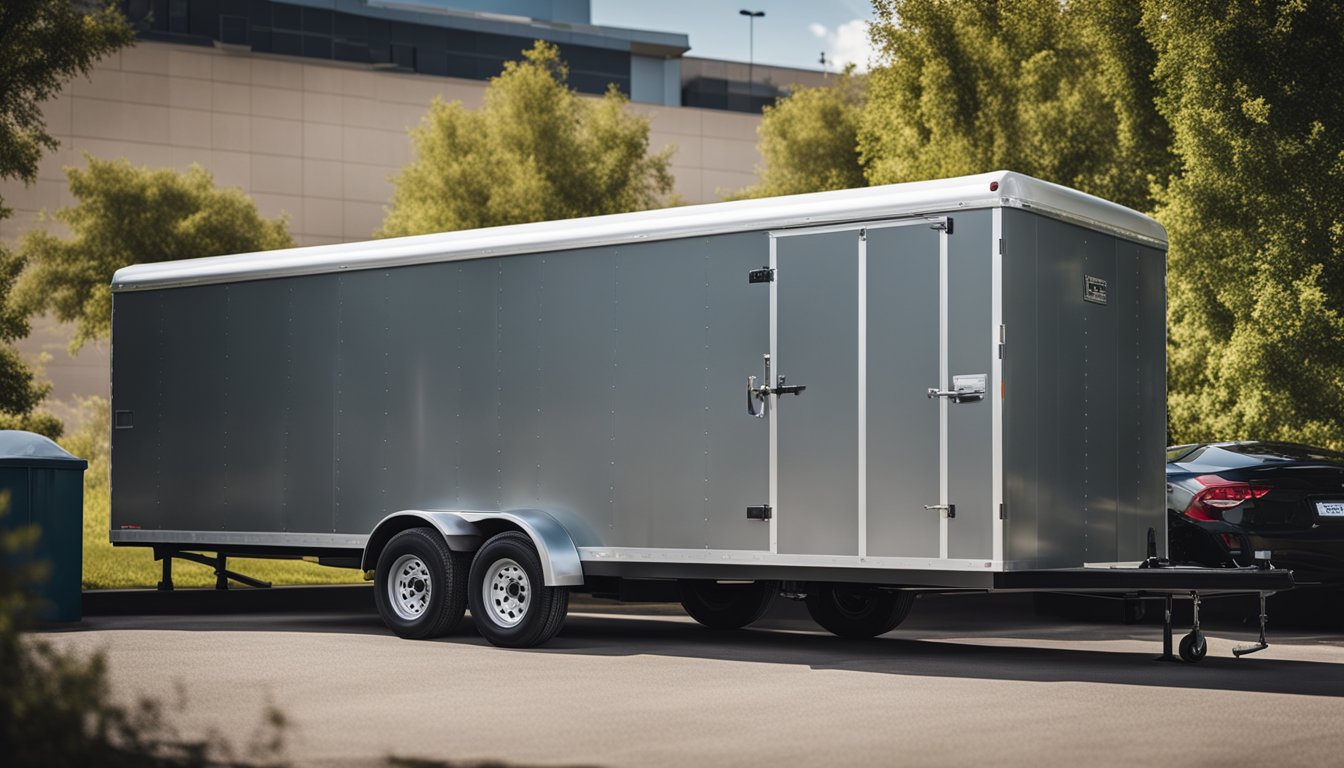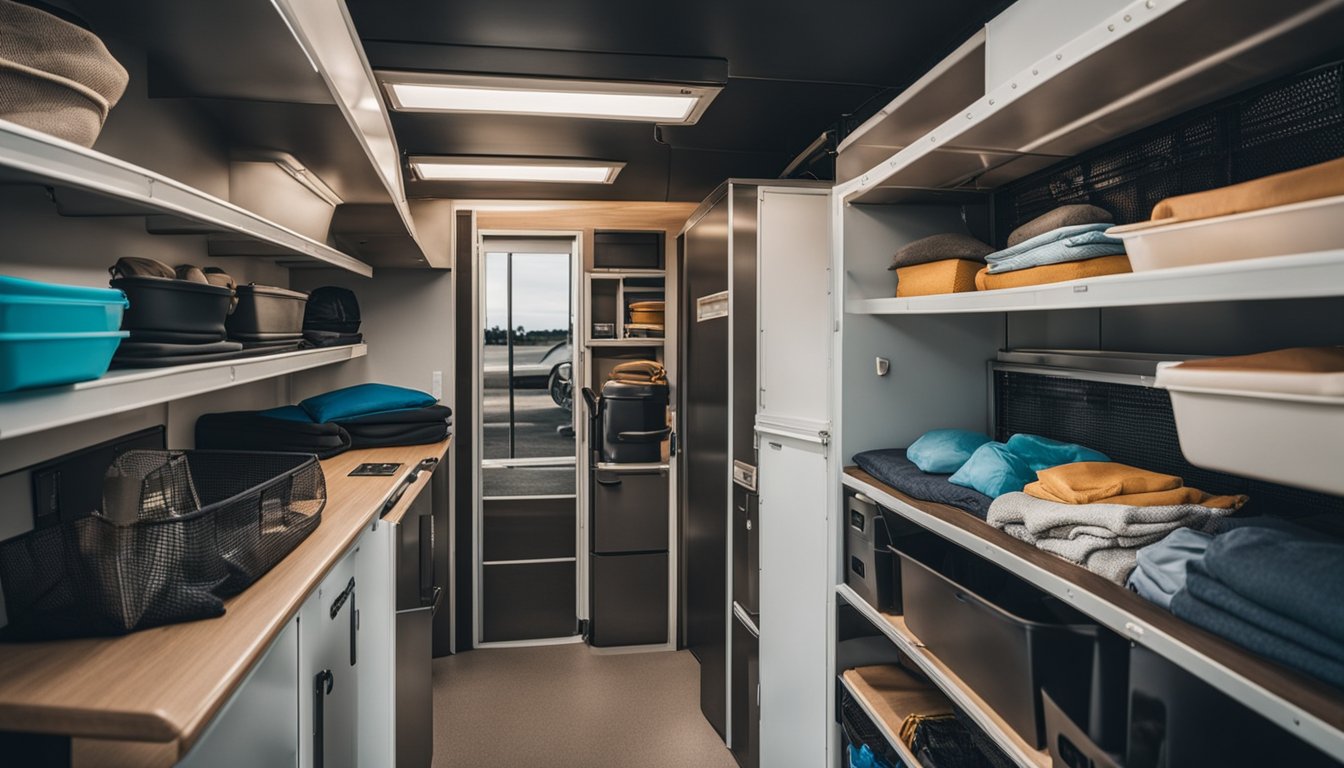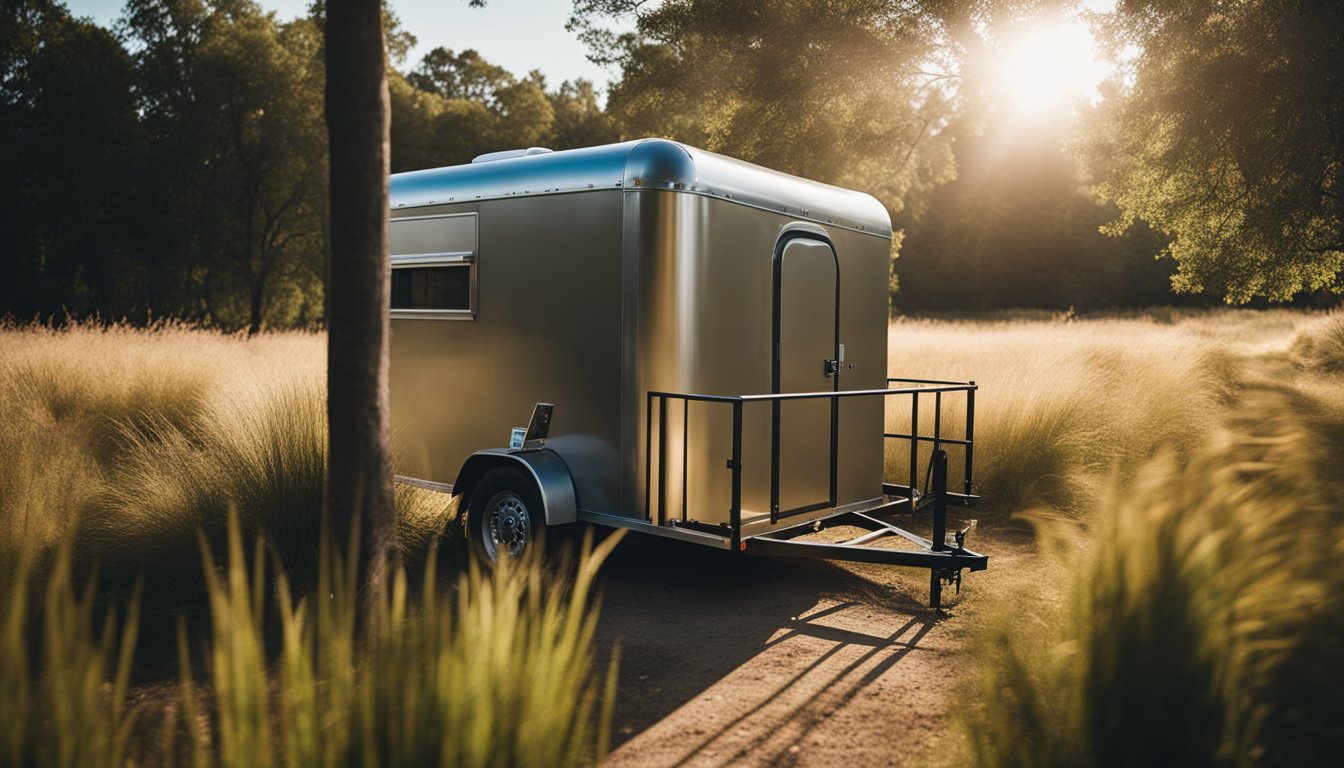Smart Storage Solutions for Your Stuff
As an RV owner, I know the struggle of finding a good spot to park my trailer when it’s not in use. That’s why I want to talk about outdoor trailer storage. It’s a great option for those of us who don’t have space at home or live in areas with strict parking rules.
Outdoor trailer storage gives us a safe place to keep our RVs when we’re not on the road. These storage spots can range from simple parking spaces to more secure areas with features like fences and cameras. It’s a relief to know our beloved trailers are protected while we’re not using them.
I’ve found that outdoor storage is often cheaper than indoor options. This is good news for my wallet! Plus, it’s easier to get my trailer in and out of an outdoor spot. This means less stress when I’m ready to hit the road for my next adventure. Outdoor trailer storage companies like The View Storage in Kingston also lets me check on my RV just about whenever I want, which gives me peace of mind.
Choosing the Right Storage Facility

Picking the perfect spot to store your trailer is key. I’ll help you understand the different types of facilities and what to look for when making your choice.
Types of Trailer Storage Facilities
When it comes to trailer storage, I’ve found there are a few main options:
- Outdoor parking: This is often the cheapest choice. Your trailer sits in an open lot.
- Covered storage: Offers some protection from the elements with a roof overhead.
- Fully enclosed storage: Keeps your trailer completely shielded from weather and prying eyes.
Each type has its pros and cons. Outdoor parking is budget-friendly but leaves your trailer exposed. Covered storage gives some shelter without breaking the bank. Enclosed storage offers the most protection but costs more.
Factors to Consider When Selecting a Facility
When I’m picking a storage spot for my trailer, I always check these key points:
- Security: I look for robust security measures like cameras, good lighting, and gated access.
- Size: I make sure the space can fit my trailer comfortably.
- Access: I prefer places with convenient access for owners.
- Cost: I compare prices to find a good deal without skimping on quality.
Location is also important. I try to find a spot that’s not too far from home. This makes it easier when I want to use my trailer.
Cleanliness matters too. A well-kept facility often means better care for my trailer. I always take a good look around before I decide.
Preparing Your Trailer for Storage

Getting your trailer ready for storage takes some work, but it’s worth it to keep it in good shape. I’ll share my top tips for cleaning, securing, and protecting your trailer from the elements.
Cleaning and Maintenance Tips
I always start by giving my trailer a thorough wash. It’s amazing how much dirt can build up! I use a mild soap and soft brush to clean the exterior, paying extra attention to the wheels and undercarriage.
After washing, I dry everything carefully to prevent water spots. Then I apply a coat of wax to protect the finish.
Inside, I vacuum and wipe down all surfaces. I remove any food items to avoid attracting pests. I also check for any signs of leaks or damage and fix them right away.
Don’t forget about the mechanical parts! I lubricate the hitch, jacks, and other moving components. It’s a good idea to check the tire pressure too.
Security Measures
Keeping my trailer safe is a top priority. I always use a sturdy hitch lock to prevent theft. For added protection, I install wheel locks on at least two wheels.
I remove any valuable items from the trailer. If I need to leave some things inside, I use hidden storage compartments or a small safe.
Motion-activated lights can deter thieves. I install battery-powered ones around my trailer’s storage spot.
I also cover or remove any identifying decals. This makes my trailer less of a target. Lastly, I check my insurance coverage to make sure I’m protected in case of theft or damage.
Weatherproofing Your Trailer
Protecting my trailer from the elements is crucial for long-term storage. I start by checking all seals and caulking around windows, doors, and roof edges. If I find any cracks, I repair them right away.
A good quality trailer cover is a must-have. It shields against UV rays, rain, and debris. I make sure to choose one that fits snugly but allows for air circulation to prevent mold.
I use tire covers to protect the rubber from sun damage and cracking. This is especially important for long-term storage.
To prevent moisture buildup inside, I place desiccant packets in various spots. I also leave a few vents slightly open for air flow, but make sure they’re bug-proof.
Storage Solutions for Different Trailers

Storing different types of trailers requires unique approaches. I’ll cover key considerations for RVs, boats, and utility trailers to help you protect your investment and maximize space.
Recreational Vehicle (RV) Storage
RV storage needs careful planning. I recommend indoor storage options for the best protection from weather. If that’s not possible, use a high-quality cover.
For organization inside the RV, I love using under-sink drawer units. They’re great for maximizing cabinet space. Secure them with bungee cords to prevent shifting during travel.
Here are some more RV storage tips:
- Use vertical space with wall-mounted organizers
- Install slide-out pantries for easy access
- Opt for multi-functional furniture with hidden storage
Remember to winterize your RV if you’re storing it long-term in colder climates. This helps prevent damage to pipes and systems.
Boat Trailer Storage
Boat trailer storage is all about protection from the elements. I always recommend using a boat cover, even if storing indoors. This keeps dust and debris off your boat.
For outdoor storage, choose a spot with good drainage. Avoid areas under trees where sap or falling branches could cause damage.
Here’s a quick checklist for boat trailer storage:
- Remove the battery and store it separately
- Lubricate moving parts to prevent rust
- Check tire pressure regularly
- Use wheel chocks for added stability
If possible, store your boat trailer on a level surface. This helps prevent uneven wear on the tires and suspension.
Utility Trailer Considerations
Utility trailers are versatile, but they still need proper storage. I suggest keeping them in a covered area if possible to protect from rust and weather damage.
For organization, consider adding:
- Wall-mounted tool racks
- Cargo nets for smaller items
- Adjustable tie-down points
If you’re storing your utility trailer outdoors, use a waterproof cover. Make sure it’s properly secured to prevent wind damage.
Regular maintenance is key. I always check the bearings, lights, and tires before and after long-term storage. This helps catch any issues early and keeps your trailer road-ready.
Maximizing Space in Your Outdoor RV Storage

Outdoor RV storage can be tricky, but I’ve got some great tips to help you make the most of your space. Let’s look at some smart ways to organize and maximize your storage area.
Organizational Strategies
I’ve found that using vertical space is key for outdoor RV storage. I like to install shelves or hooks on the walls to keep things off the ground. This frees up floor space and makes it easier to find what I need.
For smaller items, I use clear plastic bins. These stack nicely and let me see what’s inside at a glance. I label each bin so I know exactly where everything is.
I also recommend using a bike or roof rack to store larger gear. This keeps bulky items out of the way but still easily accessible.
Don’t forget about under-bed storage! I use flat containers that slide easily under the bed for items I don’t need often.
Lastly, I love using over-the-door organizers. They’re perfect for small items like cleaning supplies or tools.
Maintaining Your Trailer in Outdoor Storage

Keeping your trailer in good shape while it’s stored outside takes some work. I’ll share my tips for regular upkeep and long-term care to keep your trailer ready for your next adventure.
Routine Check-Up
I always start by cleaning my trailer inside and out before parking it. This helps me spot any issues right away. I make sure to clean the wheels, hitch, and undercarriage too. Every few weeks, I check the tire pressure and look for any cracks or wear.
I also inspect the roof and seals for leaks. Water damage can be a big problem, so I fix any small issues fast. Once a month, I open the doors and windows to let fresh air in. This prevents musty odors and mold growth.
Long-Term Preservation
For long-term trailer storage, I take extra steps. I use wheel chocks to keep it from rolling and put tire covers on to protect from sun damage. A good quality cover for the whole trailer is a must. It shields against UV rays, rain, and debris.
I make sure to lubricate moving parts like the hitch and jacks. This prevents rust and keeps everything working smoothly. Inside, I remove all food and fabrics to discourage pests. I also use moisture absorbers to control humidity.
Lastly, I disconnect the battery and store it separately. This helps extend its life. With these steps, my trailer stays in great shape, ready for my next trip.